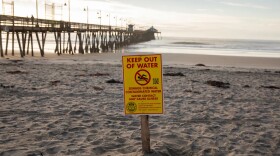The United Kingdom's fertility regulator has put its seal of approval on the "cautious use" of techniques to create a baby from the DNA of three people. The Human Fertilisation and Embryology Authority, or HFEA, announced Thursday that it will now begin to accept applications from fertility clinics that wish to become licensed to perform the procedure.
The decision means the U.K. will sanction and regulate the techniques, known broadly as mitochondrial donation, "in certain, specific cases."
"Today's historic decision means that parents at very high risk of having a child with a life-threatening mitochondrial disease may soon have the chance of a healthy, genetically related child," HFEA Chairwoman Sally Cheshire said in a statement released Thursday. "This is life-changing for those families."
While the decision is historic, it is by no means sudden. In February 2015, the British Parliament approved the practice of mitochondrial donation, and a regulatory framework has existed since October of last year — though the HFEA advised clinics to wait until it had completed a review and offered its own recommendations.
An independent panel of scientists completed that years-long review last month, recommending that the regulatory agency approve the use of mitochondrial donation "in certain cases where alternative treatments would be of little or no benefit to mothers at risk of passing mitochondrial disease on to their children."
The HFEA adopted those recommendations on Thursday.
As NPR's Rob Stein reported earlier this year, the goal of this technique is to help women who carry diseases known as "mitochondrial disorders, which are only passed down by women through defects in the genetic material in their eggs":
"Specifically, the defects are in a type of genetic material known as mitochondrial DNA. "Unlike the DNA that most people are familiar with — the 23 pairs of human chromosomes that program most of our body processes and traits — mitochondrial DNA consists of just 37 genes inside mitochondria, which are structures inside cells that provide their energy. "Mitochondrial disorders range from mild to severe. In many cases there is no treatment, and the affected child dies early in life after suffering progressive, debilitating symptoms.
Scientists want to create babies who will be born free of mitochondrial defects by allowing women who carry these diseases to use healthy mitochondrial DNA, from eggs donated by other women.
As Rob notes, the procedure is by no means universally embraced. Many critics are alarmed by the fact that changes to human DNA would be passed down from generation to generation, which could lead to unforeseen — and lasting — effects. Others fear an ethically slippery slope, which — critics contend — may eventually lead to DNA manipulation for the sake of "designer babies," or offspring wrought by parents picking the genes they wish for their child.
Still, others such as Doug Turnbull are eager to pursue the treatment. The neurology professor at Newcastle University argues that it offers many desperate families a long-awaited solution.
"We are talking about conditions for which there is currently no cure," Turnbull told Rob in 2014. "I see the anguish of the families in every clinic that I do."
Scientists at Newcastle have been closely watching the announcement from the HFEA, ready to submit a license application as soon as one was available, The Guardian reports.
No matter how quickly they move, however, the team at Newcastle will not be the first to produce a baby with the DNA of three people. Earlier this year, a doctor from a Manhattan fertility clinic said he purposefully helped a Jordanian couple have a baby with DNA from three people. He performed the mitochondrial replacement procedure in Mexico because it is currently prohibited in the U.S.
What's more, at least 17 other children were conceived through cytoplasmic transfer — another infertility treatment that used a bit of DNA from a third person, which was pioneered in New Jersey in the late 1990s and subsequently banned in the U.S.
Copyright 2016 NPR. To see more, visit http://www.npr.org/.






